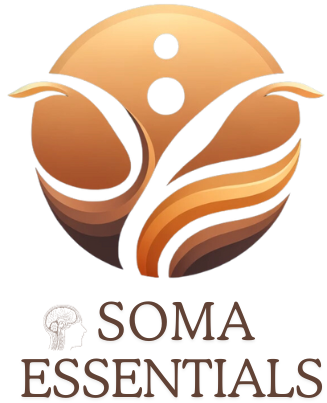Promotes Resilience and Empowerment through Somatic Experiencing
Somatic experiencing is a powerful therapy that promotes resilience and empowerment in individuals. Through this unique approach, individuals are able to tap into their body’s innate ability to heal and overcome traumatic experiences. The benefits of somatic experiencing are vast and have been proven to be effective in helping individuals move past trauma, anxiety, and other mental health challenges. In this article, we will explore the concept of somatic experiencing and how it can promote resilience and empowerment in individuals.
None
But first, let’s define what somatic experiencing is. Developed by Dr. Peter Levine, somatic experiencing is a body-based therapy that focuses on the connection between the mind and body. It is based on the understanding that trauma is not just a psychological issue, but also a physiological one.
This therapy works by helping individuals release stored tension and energy from their bodies that may have been trapped during a traumatic event. By addressing both the physical and psychological aspects of trauma, somatic experiencing helps individuals process and heal from their experiences in a safe and controlled manner.
In this article, we will delve deeper into how somatic experiencing can promote resilience and empowerment in individuals. We will also discuss the benefits of somatic experiencing and how it can be incorporated into one’s self-care routine.
Somatic Experiencing is a holistic approach that focuses on the mind-body connection and promotes overall physical and emotional well-being. It is based on the idea that our bodies hold onto unresolved traumas and emotions, and through somatic therapy, we can release these tensions and promote healing.The mind-body connection is an essential aspect of somatic experiencing. It is the understanding that our physical sensations, emotions, and thoughts are all interconnected. This means that when we experience stress or trauma, it can manifest in both our bodies and our minds. By addressing both aspects, somatic experiencing can help us achieve a deeper level of self-awareness and promote resilience.Somatic therapy is a type of therapy that focuses on body awareness and self-discovery. It involves using techniques such as breathwork, movement, and touch to help individuals become more aware of their physical sensations and emotions. By developing this awareness, individuals can learn to regulate their emotions and find new ways to cope with stress and trauma. This can be especially beneficial for those who struggle with chronic pain or have experienced traumatic events.Somatic exercises are another essential aspect of somatic experiencing. These exercises can help individuals release tension in their bodies, reduce stress, and promote relaxation. Some examples of somatic exercises include body scans, gentle stretching, and grounding techniques. By incorporating these exercises into their daily routine, individuals can learn to manage their physical and emotional well-being.The principles of somatic movement and healing play a crucial role in promoting resilience and empowerment. These principles focus on the idea that our bodies hold onto trauma and tension, and by engaging in specific movements, we can release these tensions and promote healing. By incorporating these principles into somatic therapy sessions, individuals can learn to connect with their bodies in a more profound way and develop a greater sense of self-awareness.Somatic psychology also plays a significant role in promoting resilience and empowerment. This branch of psychology focuses on the mind-body connection and how our emotions and thoughts can impact our physical well-being. By addressing both aspects, somatic psychology can help individuals develop a deeper understanding of themselves and their experiences, leading to increased resilience and empowerment.Overall, somatic experiencing is a powerful tool for promoting resilience and empowerment. By understanding the mind-body connection, engaging in somatic therapy and exercises, and incorporating the principles of somatic movement and healing, individuals can develop a greater sense of self-awareness and learn new ways to cope with stress and trauma. Through somatic psychology, individuals can also gain a better understanding of the impact their emotions and thoughts have on their overall well-being. This holistic approach can lead to improved physical and emotional health, promoting resilience and empowerment in all aspects of life.
Exploring Somatic Therapy
Somatic therapy is a form of psychotherapy that focuses on the mind-body connection and uses physical sensations and movements to address emotional and psychological issues. It is based on the idea that our bodies hold onto past traumas and experiences, and by working through them physically, we can also heal emotionally.
Somatic therapy techniques include deep breathing, mindfulness exercises, and body awareness exercises such as body scans, body mapping, and grounding techniques. These techniques help individuals become more in tune with their bodies and better understand how their emotions manifest physically.
Through somatic therapy, individuals can gain a deeper understanding of themselves and their emotions. By exploring their body sensations and movements, they can discover patterns and connections between their physical and emotional states. This can lead to increased self-awareness and a better ability to regulate emotions, ultimately promoting resilience and empowerment.
Understanding the Mind-Body Connection
Somatic Experiencing is a holistic approach that recognizes the interconnectedness between the mind and body. It acknowledges that our physical and emotional experiences are intertwined and that one cannot be fully addressed without also addressing the other. This concept of mind-body connection is crucial in promoting resilience and empowerment.
When we experience trauma or stress, our body and mind can become disconnected, leading to a variety of physical and emotional symptoms. Somatic Experiencing works to bridge this gap by using somatic techniques, such as gentle movements and breathing exercises, to help individuals reconnect with their bodies and release tension and trauma stored within.
By understanding the mind-body connection, individuals can learn to regulate their emotions, manage stress, and cultivate a sense of inner strength and resilience. It allows for a deeper understanding of how our thoughts, emotions, and physical sensations are all connected and how they can influence one another.
The Role of Somatic Psychology
Somatic psychology plays a crucial role in promoting resilience and empowerment as it focuses on the mind-body connection and helps individuals better understand and process their emotions and experiences. Through somatic therapy, individuals learn to tune into their physical sensations and use them as a tool for self-awareness and healing.
One of the key principles of somatic psychology is that the body holds onto trauma and emotional stress, which can manifest in physical symptoms or discomfort. By addressing these physical manifestations, individuals can release and process the underlying emotions, leading to a greater sense of resilience and empowerment.
Somatic therapy also helps individuals develop a deeper understanding of their emotions and how they are connected to their physical sensations. This can be particularly helpful for those who struggle with expressing or processing their emotions. Through somatic therapy exercises, individuals can learn to regulate their emotions and develop healthier coping mechanisms.
The mind-body connection is also essential in promoting resilience and empowerment because it allows individuals to tap into their inner strength and resources. By becoming more aware of their physical sensations, individuals can learn to identify and utilize their own resilience and coping skills. This can lead to a greater sense of empowerment as individuals discover their own abilities to overcome challenges and handle difficult emotions.
In summary, somatic psychology is a powerful tool in promoting resilience and empowerment. Through its emphasis on the mind-body connection, somatic therapy helps individuals understand and process their emotions and experiences, leading to a greater sense of self-awareness, strength, and resilience.
Principles of Somatic Movement and Healing
Somatic movement and healing is a holistic approach that focuses on the mind-body connection to promote overall physical and emotional well-being. It is based on the belief that our body holds onto past traumas and experiences, which can lead to physical and emotional blockages.
The key principles of somatic movement and healing involve bringing awareness to these blockages and using the body’s natural movements to release them. By tuning into our body sensations and movements, we can tap into our innate ability to heal ourselves.
One of the main principles of somatic movement and healing is the understanding that our body stores memories and emotions, both positive and negative. Through somatic exercises and therapy, we can learn to recognize and release these stored emotions, leading to a greater sense of resilience and empowerment.
Another important principle is the focus on the present moment. Somatic movement and healing encourages individuals to be fully present in their body and to pay attention to their sensations, rather than getting caught up in past traumas or future worries. This helps individuals build resilience by learning to cope with difficult emotions in the present moment.
Somatic movement and healing also emphasizes the mind-body connection. By focusing on the physical sensations in our body, we can gain a deeper understanding of our emotions and how they manifest physically. This awareness allows us to make conscious decisions about how we respond to our emotions, leading to a greater sense of empowerment.
In summary, the principles of somatic movement and healing involve bringing awareness to our body’s sensations, releasing stored emotions, staying present in the moment, and strengthening the mind-body connection. By incorporating these principles into our lives, we can enhance our resilience and empowerment, leading to a more fulfilling and balanced life.
Somatic Exercises for Stress Relief
Somatic exercises are a key component of somatic experiencing and can greatly benefit individuals looking to relieve stress and improve their overall well-being. These exercises focus on the mind-body connection and utilize movement, breathwork, and mindfulness techniques to help release tension and promote relaxation.
One helpful somatic exercise is the body scan. This involves lying down in a comfortable position and slowly scanning your body from head to toe, noticing any areas of tension or discomfort. With each scan, take deep breaths and consciously release any tension you may be holding in that area.
Another effective exercise is shaking or trembling. This may sound strange, but it is a natural and instinctive response to stress or trauma. By intentionally engaging in this shaking or trembling movement, you are allowing your body to release built-up tension and stress, leading to a sense of relief and relaxation.
Practicing somatic exercises regularly can not only help with stress relief, but also promote a stronger mind-body connection. By becoming more aware of your body and how it responds to stress, you can better manage and cope with difficult situations. Additionally, these exercises can improve physical well-being by reducing muscle tension and promoting better blood flow.
In conclusion, Somatic Experiencing is a powerful tool for promoting resilience and empowerment. By understanding the mind-body connection, utilizing somatic therapy and exercises, and incorporating the principles of somatic movement and healing, individuals can improve their overall well-being and self-awareness. Somatic psychology plays a vital role in this process by helping individuals understand and process their emotions. Incorporating these practices into daily life can lead to a stronger mind-body connection and a more empowered sense of self.

